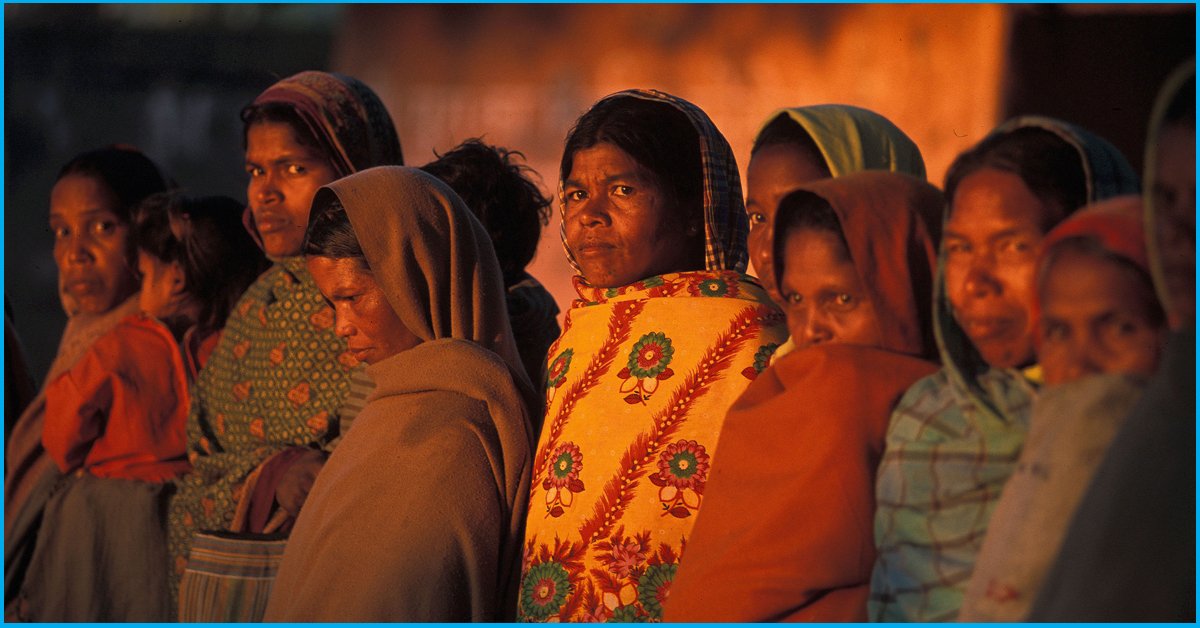
Average Dalit Woman Dies 14.6 Years Earlier Than Woman From Higher Caste: UN Study
18 Feb 2018 1:22 PM GMT
Editor : Bharat Nayak
As the founding editor, Bharat had been heading the newsroom during the formation years of the organization and worked towards editorial policies, conceptualizing and designing campaign strategies and collaborations. He believes that through the use of digital media, one could engage the millennial's in rational conversations about pertinent social issues, provoking them to think and bring a behavioral change accordingly.
In a new report on the gender inequalities that plague communities around the world, the United Nations (UN) found that in India, a woman’s caste and her life expectancy are intricately connected. In fact, the average Dalit woman in India dies 14.6 years earlier than her counterpart from a higher caste.
As the report explained, the identities (perceived or inherent) of individuals and groups can increase their risks of discrimination and marginalisation. Many factors go into this increase in mortality, the chief among them being poor sanitation and inadequate healthcare.
Titled “Turning promises into action: gender equality in the 2030 Agenda”, the report was compiled by UN Women. It states: “Those left furthest behind in society are often women and girls who experience multiple forms of disadvantage based on gender and other inequalities… This can lead to clustered deprivations where women and girls may be simultaneously disadvantaged in their access to quality education, decent work, health and well-being.”
The 2030 Agenda for Sustainable Development
Adopted in September 2015, the 2030 Agenda for Sustainable Development tackles a broad range of global challenges, aiming to eradicate poverty, reduce multiple and intersecting inequalities, address climate change, end conflict and sustain peace.
Due to the relentless efforts of women’s rights advocates from across the globe, the 2030 Agenda’s commitment to gender equality is prominent, comprehensive and cross-cutting, building on the commitments and norms contained in the Beijing Declaration and Platform for Action and the Convention on the Elimination of All Forms of Discrimination against Women (CEDAW).
Access to education, marriage & way of life determined vehemently by identity of person
The UN report calculated that a young woman in India between the ages of 20 and 24 is 21.8 times less likely to ever attend school if she was from a poor household when compared to a young woman from a rich household.
The impoverished young woman is also five times more likely to marry before the age of 18 and 5.8 times as likely to become an adolescent mother.
“The likelihood of being poor is greater if she is landless and from a scheduled caste. Her low level of education and status in the social hierarchy will almost guarantee that if she works for pay, it will be under exploitative working conditions,” the report states.
And while literacy rates have skyrocketed across the country since independence, literacy rates among the less previleged is disproportionate to their population.Scheduled castes (SCs), who make up 16.6% of the population and scheduled tribes (STs), who account for 8.6% of the population have lower literacy rates than the Indian average.
Meanwhile, the literacy rate for female STs is still under 50% and it is 57% for SC women (the numbers are only slightly higher for men).
The UN Women report also found that women who live in poor households spend as much as 24% of their work time collecting firewood and water and foraging for edible and non-edible items to be used as food and housing materials while women in non-poor households allocate about one half of that time, 12%, to such tasks.
Dalits face rampant discrimination at different levels in the country. The National Crime Records Bureau (NCRB) reports a 44% increase in violence against Dalits, up from 32,712 in 2010 to 47,064 crimes in 2014. These incidents are directed towards reminding Dalits about their status in a caste-based social structure and ensuring that they remain there.
Where on the one hand we want to prove to ourselves and to the world that we are progressive in thought, our actions betray this idea.
The situation around the world is also grim
In India, as around the world, gender inequalities manifest themselves in every dimension of sustainable development. When households cannot access sucient food, women are often the first to go hungry. While girls are increasingly doing better in school and university than boys, this has not translated into gender equality in the labour market. While women have made important inroads into political oce across the world, their representation in national parliaments at 23.7% is still far from parity (the number is about half the global average for India), and women politicians and voters face threats and attacks, persistent sexual harassment and online abuse.
One in five women and girls have experienced physical and/or sexual violence by an intimate partner within the last 12 months. Yet, 49 countries have no laws that specifically protect women from such violence. Despite their increasing presence in public life, women continue to do 2.6 times the unpaid care and domestic work that men do. Women and girls are also the main water and solid fuel collectors in households without access to an improved water source and clean energy in their homes, with adverse implications for their health and safety
This state of affairs presents a real test for the implementation of the 2030 Agenda. Yet, the 2030 Agenda’s focus on sustainability, equality, peace and human progress provides a powerful counter-narrative to current practices of extraction, exclusion and division. The SDGs are especially important now, both as a political agenda for global cooperation and as a specific, time-bound set of targets that underline the urgent need for concerted action.
What will it take to harness their transformative potential and make them work for gender equality and women’s rights?
To read the entire report, click here.
 All section
All section













